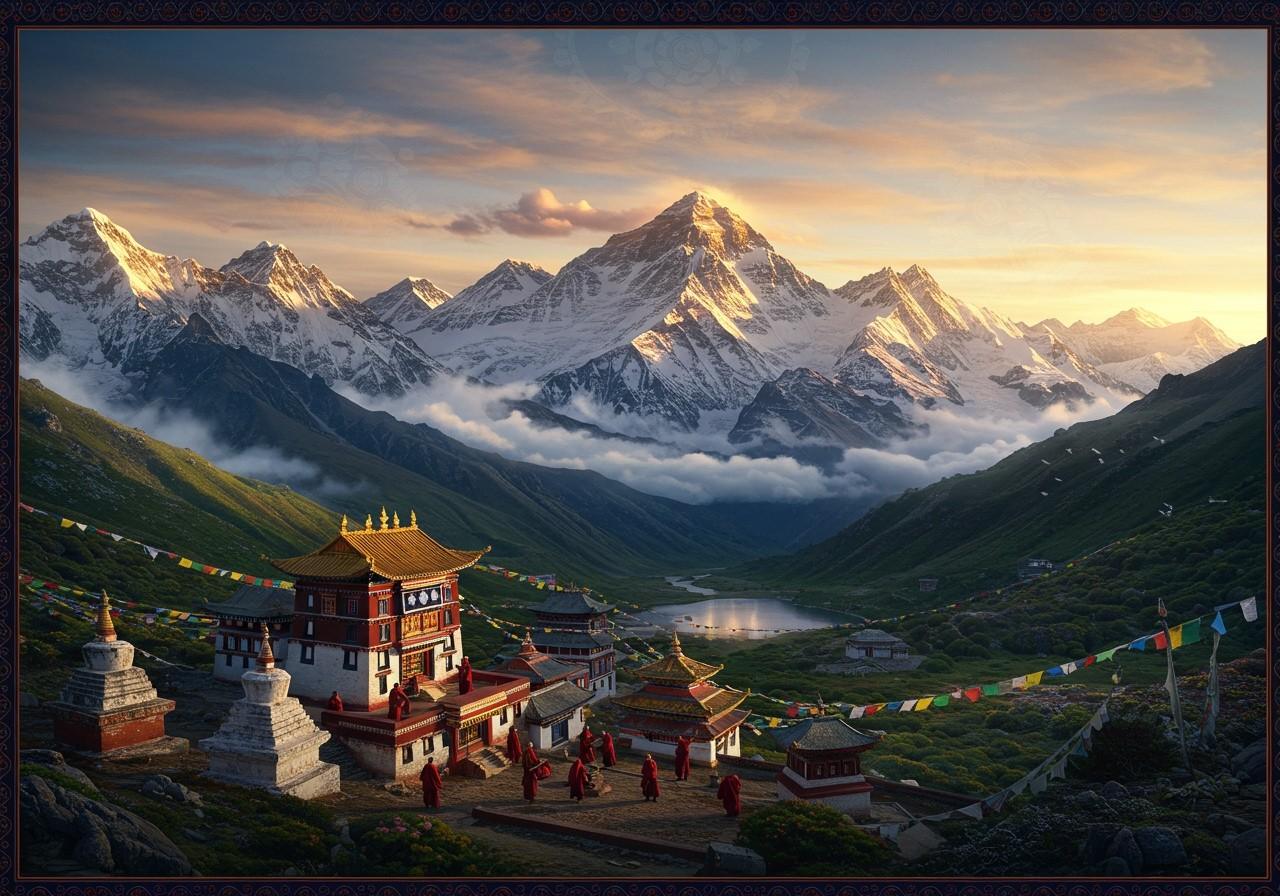
The Himalayas, a majestic mountain range in Asia, are renowned for their breathtaking landscapes and profound cultural significance. This article delves into their geographical location, the countries they encompass, and their classification as a fold mountain range. Gaining insights into these aspects will deepen your appreciation for this iconic natural wonder.
Geographical Location
The Himalayas stretch across five South Asian countries: India, Nepal, Bhutan, China, and Pakistan. Extending over 2,400 kilometers (1,500 miles) from the Indus River in Pakistan to the Brahmaputra River in India, they form a natural barrier between the Tibetan Plateau to the north and the Indian subcontinent to the south.
- Latitude: Approximately 26°N to 35°N
- Longitude: Ranges from 72°E to 95°E
- Climate: Varies dramatically, from subtropical conditions in the lower regions to arctic conditions at higher altitudes.
Countries Encompassing the Himalayas
- India: Several states, including Jammu and Kashmir, Himachal Pradesh, Uttarakhand, Sikkim, and Arunachal Pradesh, are nestled within the Himalayas.
- Nepal: Renowned for its towering peaks, Nepal is home to eight of the world’s ten highest mountains, including the legendary Mount Everest.
- Bhutan: The eastern Himalayas grace Bhutan, featuring prominent peaks like Gangkhar Puensum, considered the highest unclimbed mountain in the world.
- China: The northern slopes of the Himalayas fall within the Tibetan Autonomous Region of China.
- Pakistan: The western extent of the Himalayas stretches into the Gilgit-Baltistan region of Pakistan.
Type of Mountain Range
The Himalayas are a fold mountain range, a product of the collision between the Indian and Eurasian tectonic plates approximately 50 million years ago. This ongoing geological process contributes to their status as one of the youngest mountain ranges on Earth.
Three Parallel Ranges
- Greater Himalayas (Himadri): This range boasts the highest peaks, including Mount Everest, Kanchenjunga, and Lhotse.
- Lesser Himalayas (Himachal): Situated south of the Himadri, the Lesser Himalayas feature lower peaks and valleys.
- Outer Himalayas (Shiwalik): Characterized by foothills and lower elevations, the Shiwaliks form the southernmost range.
Significance and Cultural Impact
The Himalayas hold immense spiritual and religious importance in Hinduism, Buddhism, Jainism, Sikhism, and Bon. Sacred sites like Kedarnath, Badrinath, and Mount Kailash draw pilgrims from across the globe. The range profoundly influences the culture, traditions, and lifestyles of diverse ethnic groups.
- Source of Rivers: Life-giving rivers such as the Ganges, Yamuna, Indus, and Brahmaputra originate in the Himalayas, sustaining millions downstream.
- Essential for Agriculture and Livelihoods: The Himalayas play a crucial role in the agricultural practices and livelihoods of countless communities.
Adventure and Tourism
The Himalayas offer unparalleled opportunities for adventure tourism, attracting thrill-seekers and nature enthusiasts alike.
- Trekking and Mountaineering: Popular trekking routes include the Everest Base Camp Trek, Annapurna Circuit, and Markha Valley Trek. Mountaineers challenge themselves with peaks like Everest, Kanchenjunga, and Nanga Parbat.
- Diverse Landscapes and Cultural Experiences: The Himalayas showcase a stunning array of landscapes, from lush forests to high-altitude deserts. Cultural tourism thrives with visits to ancient monasteries, temples, and traditional villages.
Poojn.in: Your Companion for Himalayan Spiritual Journeys
Planning a pilgrimage to the sacred Himalayas? Poojn.in, India’s leading cultural goods and services store, offers a wide selection of items to enhance your spiritual experience.
- Puja Items: Find complete puja thalis, copper and brass kalash, rudraksha malas, dhoop, incense, and more. Explore our collection of Tulsi Kanthi Malas.
- Sacred Accessories: We offer sacred threads, religious accessories, and Gangajal in secured packaging for your convenience. Check out our Mangalam Camphor for your puja needs.
Conservation and Challenges
The Himalayas face pressing environmental challenges, including climate change, deforestation, and glacial melting. Conservation initiatives are crucial for preserving the region’s biodiversity and protecting endangered species.
- Local Communities and Traditional Knowledge: Local communities play a vital role in conservation efforts, drawing upon their traditional knowledge and practices.
- International Cooperation: Addressing the complex challenges facing the Himalayas requires international collaboration and sustainable tourism practices.
Conclusion
The Himalayas are an invaluable part of our natural and cultural heritage. Understanding their geographical context, the countries they span, and their geological formation enhances our appreciation for their magnificence. By supporting conservation efforts and embracing responsible tourism, we can help protect this extraordinary mountain range for generations to come.
Learn more about the Hidimba Devi Temple in Manali
Explore the temples of Himachal Pradesh
Plan your pilgrimage to Aadi Himani Chamunda
Discover the divine triangle of Kangra, Chamunda Devi, and Jwala Devi
Read about the Baijnath Temple


